A truly unique kind of vodka – one that’s growing quickly in popularity – makes its way through the distilling process flanked by Viega products along the way. At Black Eyed Distilling Co. in Fort Worth, Texas, owners Todd Gregory and Scott Billings make BLK EYE Vodka. It’s as it sounds, a specialty vodka made Read more
Featured Articles
A truly unique kind of vodka – one that’s growing quickly in popularity – makes its way through the distilling process flanked by Viega products along the way.
At Black Eyed Distilling Co. in Fort Worth, Texas, owners Todd Gregory and Scott Billings make BLK EYE Vodka. It’s as it sounds, a specialty vodka made with black-eyed peas and corn, sourced completely from Texas. Just a year into the business and the distillery is already winning awards.
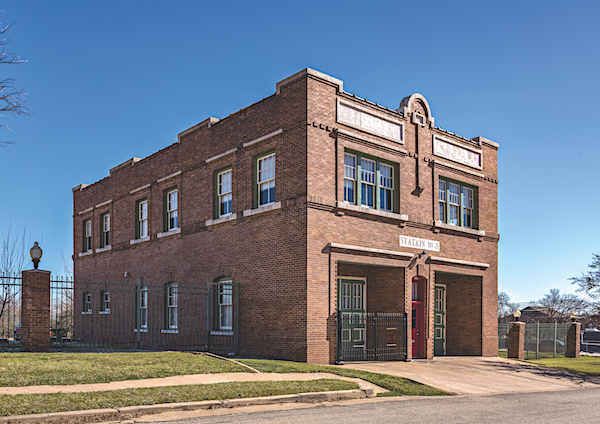
Gregory and Billings purchased the distillery from another owner but knew that upon taking over, the building needed to be retrofitted. The basics of the plumbing were in place, but they had to replace a chiller, a boiler and add a blending tank with a cooling jacket. They also needed a new air compressor and air lines.
 The duo had plumbing experience, so they planned to do much of the work themselves, which led Gregory to ask a contractor he knew, Randy Pair of O’Grady Plumbing, if he had a pipe threader they could borrow. Pair told him he had a “better deal” and put him in touch with a Viega rep.
The duo had plumbing experience, so they planned to do much of the work themselves, which led Gregory to ask a contractor he knew, Randy Pair of O’Grady Plumbing, if he had a pipe threader they could borrow. Pair told him he had a “better deal” and put him in touch with a Viega rep.
“He showed us the fittings and had a loaner set of tools we could use to retrofit. We started using Viega and thought, ‘Oh my gosh, this is incredible!’” Gregory said. “It allowed us to do the retrofitting ourselves as we got the pipe in. We would install and build what we needed to do to fit the particular equipment and it was quick and easy to use the tools.” Gregory and Billings called on Pair now and then to help advise or lend a hand, making sure they were using the right types of fittings for all the different lines they were running, including ProPress for chilled water, steam, water and compressed air lines in the distillery. They also used MegaPressG for natural gas lines.
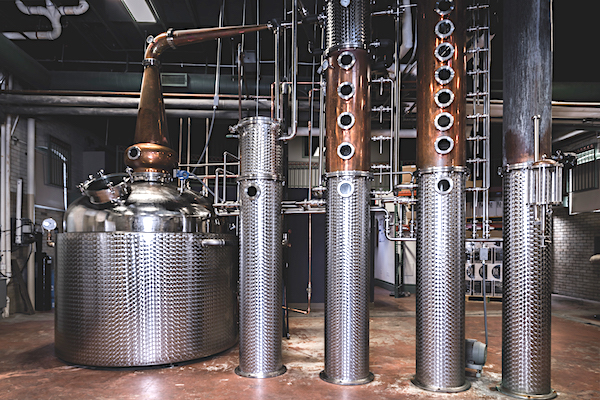 “I pointed them in the direction of Viega because I knew it would be the best choice for them,” Pair said. “Threading didn’t make any sense for them. Press is a lot cleaner and then they wouldn’t be putting oil in the system. It was just all around a better process for them.”
“I pointed them in the direction of Viega because I knew it would be the best choice for them,” Pair said. “Threading didn’t make any sense for them. Press is a lot cleaner and then they wouldn’t be putting oil in the system. It was just all around a better process for them.”
“If Randy had loaned me that pipe threader, we might still be working on it!” Gregory said laughing. “I don’t even know how to describe Viega. It was amazing for us.”

E-commerce solutions for the kitchen and bath industry are crucial for contractor suppliers. The right online solution must combine the complexity of business-to-business with the ease of consumer simplicity. It can enhance, develop and support customer relationships. But it involves the relentless pursuit of the exact mix of data, technology, training and support. In the Read more
E-commerce solutions for the kitchen and bath industry are crucial for contractor suppliers.
The right online solution must combine the complexity of business-to-business with the ease of consumer simplicity. It can enhance, develop and support customer relationships. But it involves the relentless pursuit of the exact mix of data, technology, training and support.
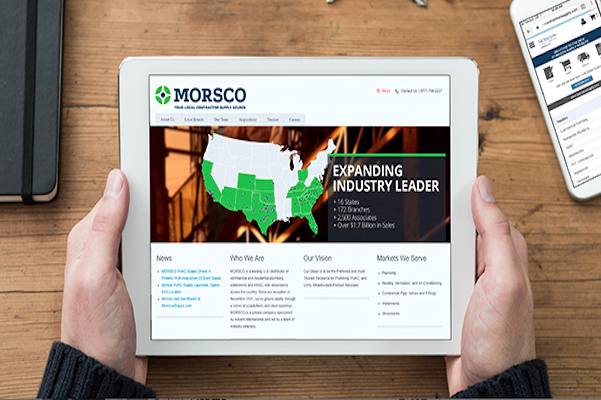
In the end, it preserves old-school relationships, adds a new-school solution and becomes a tool to spur new business.
A Rich History of Relationships
Contractor supply has historically been a relationship business. Customers go to the supply house and develop face-to-face relationships with staff, who become more than just order-takers.
Tailoring the right online solutions for customers can maintain that personal touch and help everyone get their jobs done faster.
What Customers Want
Distributors are adapting to a changing buyer profile that expects online services – from requesting and checking quotes, to reviewing local inventory and pricing in real time, to placing orders quickly for scheduled delivery.
But e-commerce systems and personnel can do more than help current customers. They can help win new business.
E-commerce is more than just creating a shopping cart. It’s a complete digital transformation.
A Complex Transaction
It’s critical to get input from both customers and from every level of the supplier organization. At MORSCO, we listen closely to customers, as well as our inside and outside sales teams, operations, accounts payable and other internal stakeholders. All these parties must help develop the solution and train customers afterward. It becomes everyday business, not just a one-time project.
Keep it Personal
Even with stakeholder input from all levels, e-commerce can still seem impersonal. But with support from the staff at the local branches – particularly inside sales—and with communication from local contractors, the face-to-face support will remain. Orders and follow ups should go through the local branch—not a call center—so customers know they are still dealing with suppliers at the local level who understand their needs.
The right online solution also frees up time for the outside sales staff. With advanced features, like easy-to-use custom pricing and quoting tools, the outside team can better support new and potential customers. Instead of tracking down invoices and delivery slips, outside sales reps can leverage digital platforms to spark better conversations with customers, bringing sophistication to a centuries-old industry.
Suppliers in the kitchen and bath industry, meanwhile, can continue to serve as personal consultants, troubleshooters and more, all in a face-to-face capacity. That provides better, faster service, while maintaining an unmatched level of local, personal support for customers.
Benefits for Vendors
E-commerce sites can also serve as a vendor’s marketing tool, salesperson and cashier. Benefits include:
- Mobile solutions like phone and tablet access that help customers search for products and inventory at the local level and place orders anywhere, anytime, including on job sites.
- The ability to increase customer reach and become the preferred online vendor for customers.
- Increased sales and loyalty with existing and new customers.
The Right Solutions
So what does it take to offer world class e-commerce? Solutions that:
- Help people get jobs done more efficiently, freeing talent for higher-value tasks. Viewing and paying invoices can now be done online, much more quickly, and at the customer’s convenience.
- Allow access anywhere from desktop computers to job sites through mobile phones. Offer technical documents, catalogs, component and accessory information, as well as substitute items and recommendations.
- Include side-by-side input from customers and support from employees.
- Invest in training for all sales and branch staff, ensuring the face-to-face support can be seamless and add value.
- Offer support that involve local branches, which are critical for both your customers and your employees. Be sure users know the types of support offered and that support tickets are addressed quickly and completely.
- Leverage technology: Power your digital customer experience with top-tier e-commerce, search, marketing automation, analytics, and data platforms. At MORSCO, this gives customers the 24/7 access they need, increases our ability to make complex online transactions that vary by a customer’s needs and creates the customer value that goes beyond the online shopping cart.
E-commerce solutions must remember the importance of the long-standing relationship nature of the business. It’s an exciting time for those who can adapt.
 Story contributed by by Darren Taylor, CMO, MORSCO
Story contributed by by Darren Taylor, CMO, MORSCO

You know the value of every drop if you live in the golden state. Even though water usage is systematically managed, dry seasons affect California and the people who live there. Drought causes economic and environmental challenges – lost crops, fires, land degradation, animal survival, and the list goes on. Caltech, the world renowned science Read more
You know the value of every drop if you live in the golden state. Even though water usage is systematically managed, dry seasons affect California and the people who live there. Drought causes economic and environmental challenges – lost crops, fires, land degradation, animal survival, and the list goes on.
Caltech, the world renowned science and engineering institute in Pasadena, has a deep understanding of the changing hydrologic cycle in California and recognizes the importance of being a responsible steward of water resources. It’s committed to becoming more efficient in its water use, while maintaining the capability to conduct its core mission of research and education.

For Caltech, change starts with conversation and leads to action. The institute’s plumbing shop regularly retrofits its water systems, from cooling towers to plumbing fixtures. But even with its own in-house experts, Caltech needed more bandwidth to make a campus-wide upgrade happen. Fortunately, opportunity and timing aligned.
The City of Pasadena Water & Power approached Caltech about its water conservation programs. Metropolitan Water District of Southern California, regional water supply wholesaler, teamed up with PWP to offer water saving services and valuable rebate incentives. It’s truly local government and the business sector working together to bring smarter water solutions at a more affordable upfront cost.
Group Effort is Greater Reward
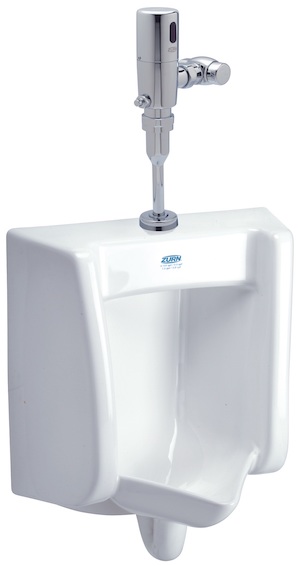
Zurn’s Z5775 OmniFlo™ Urinal with ZTR Sensor Flush Valve
The water conservation team visited Caltech’s impressive 124-acre campus. With oversight from the institute’s plumbing experts, they completed the efficiency studies and offered water saving options, along with the calculated project costs after rebate and the return from future savings.
The institute decided to move forward with retrofitting its restroom urinals campus-wide. It would take time and resources, but the program rebate offset enough of the project costs for a faster payback. Not to mention, the project would benefit the institute and surrounding communities. Every flush from a urinal or toilet system uses gallons of water – water that is a shared, sourced resource in California.
“We completed smaller urinal retrofit projects consistently over the past several years, but we needed to really move the meter with regard to water consumption. The program fit our initiative and wouldn’t have been possible without collaborative effort by the whole project team,” said John Onderdonk, Director of Sustainability Programs at Caltech.
Highly efficient urinals optimize flow by using more power with less water. Muir-Chase Plumbing retrofitted Zurn Retrofit Pint urinal systems in every bathroom across campus. Today, Caltech’s upgraded urinals consume 87% less water than traditional 1.0 gpf, exceeding the LEED 30% threshold. The project results add up to saving 6,056,130 gallons of water and $42,393 per year. Caltech is already looking into future project investments, such as low-flow faucets and toilets. It’s a great effort set in motion by a diverse team—all with unique functions but the same water saving mission.

Installers find design and installation benefits from PEX plumbing system for micro apartments project The Interurban Lofts in Shoreline, Wash., just outside of Seattle, are part of a new housing trend for millennials looking for a hybrid approach to home life. These “apodments,” as they’re called, feature a unique setup of eight studio units per Read more
Installers find design and installation benefits from PEX plumbing system for micro apartments project
The Interurban Lofts in Shoreline, Wash., just outside of Seattle, are part of a new housing trend for millennials looking for a hybrid approach to home life. These “apodments,” as they’re called, feature a unique setup of eight studio units per “pod” with a full bathroom in each unit and a shared kitchen. Each unit is partially furnished with a bed, microwave and mini-fridge.
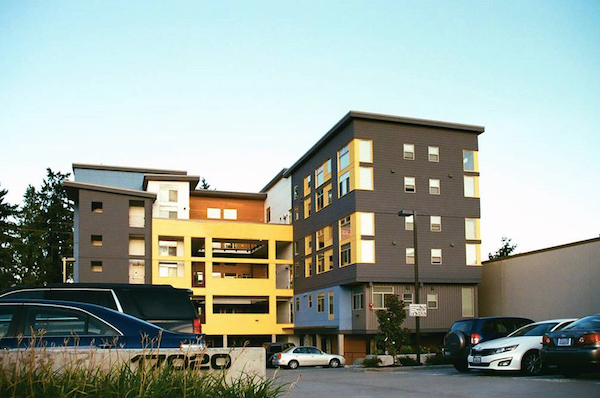
The community atmosphere targets university students, recent graduates, young professionals and even seniors with the purpose of giving individuals more affordable housing and the opportunity to spend money on experiences, not spaces.
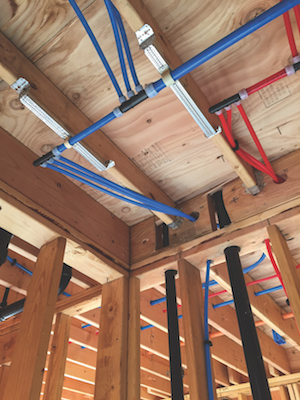 When planning the design for the six-story, 22,000-square-foot, 80-unit complex, the developers wanted a plumbing system that was efficient, durable and long-lasting, so they chose to go with PEX. Uponor’s design engineers and the Interurban Lofts project engineers worked in tandem to create an efficient system utilizing the flexible PEX piping along with ProPEX® expansion connections and multiport tees throughout.
When planning the design for the six-story, 22,000-square-foot, 80-unit complex, the developers wanted a plumbing system that was efficient, durable and long-lasting, so they chose to go with PEX. Uponor’s design engineers and the Interurban Lofts project engineers worked in tandem to create an efficient system utilizing the flexible PEX piping along with ProPEX® expansion connections and multiport tees throughout.
The project used more than 10,000 ft. of Uponor AquaPEX® tubing to plumb the entire structure. For a few of the installers, it was their first time working with Uponor PEX. Thankfully, onsite training from the manufacturer gave them a short-lived learning curve.
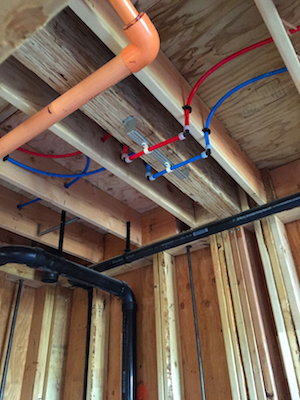 “Once you’ve tried making a fitting two times, you’ve got it. It just becomes common sense,” said Roman Hudson, foreman at Wolfe Plumbing. “The Milwaukee M18™ FORCELOGIC™ ProPEX expansion tool operates the same as the smaller tool — just pull the trigger and let it go.”
“Once you’ve tried making a fitting two times, you’ve got it. It just becomes common sense,” said Roman Hudson, foreman at Wolfe Plumbing. “The Milwaukee M18™ FORCELOGIC™ ProPEX expansion tool operates the same as the smaller tool — just pull the trigger and let it go.”
The team appreciated the faster, easier installation with the Uponor PEX system, which included a lighter-weight solution compared to copper and other metallic piping.
“PEX is more forgiving and it’s lighter than copper,” said Hudson. “We used to use CPVC, stainless and copper pipes, but ProPEX fittings, man, it’s quick and fast. Once you started figuring it out, PEX is faster.”
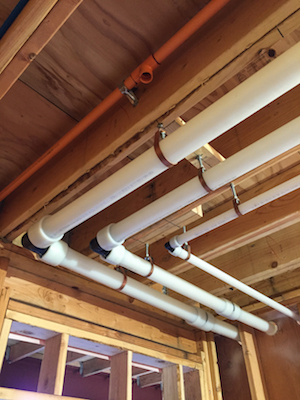 The benefits didn’t stop there. With the design expertise from a manufacturer that’s been in the PEX industry for more than four decades, the project also reaped additional advantages beyond the installation.
The benefits didn’t stop there. With the design expertise from a manufacturer that’s been in the PEX industry for more than four decades, the project also reaped additional advantages beyond the installation.
“The cool thing about Uponor Design Services is, because it’s their product, they’ll push the engineering to the max,” said Bert Shepardson, commercial plumbing project manager at
Wolfe Plumbing. “That’s what allows us to use smaller pipe sizes and have more favorable installs.”

Washington—With more than more than 100 PHCC contractors, state and local chapter executives, and p-h-c industry partners descending on Capitol Hill last month for the Plumbing Heating Cooling Contractors (PHCC) Legislative Conference, the message is quite clear: the future starts now. PHCC National President Laurie Crigler set the tone for the event prior to meetings Read more
Washington—With more than more than 100 PHCC contractors, state and local chapter executives, and p-h-c industry partners descending on Capitol Hill last month for the Plumbing Heating Cooling Contractors (PHCC) Legislative Conference, the message is quite clear: the future starts now.
PHCC National President Laurie Crigler set the tone for the event prior to meetings on Capitol Hill, as p-h-c industry partners delivered a unified message to members of Congress about ongoing challenges that will have a long-term impact on the p-h-c industry and the country. “Politics is NOT a spectator sport and your involvement is key to successful advocacy at all levels—local, state and national. None of this works without you,” she said.
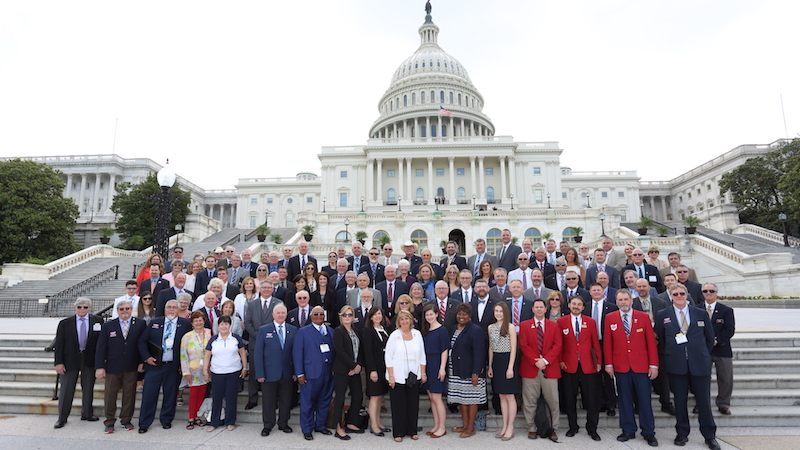
PHCC and its advocacy group on the steps of Capitol Hill.
Moreover, PHCC continues to educate members of congress of the tremendous opportunities within the plumbing and HVAC trades, “Part of the answer to job growth in this country has to be the continued development of the skilled trades. It’s not just talk anymore,” says Mark Riso, Vice President of Legislative Affairs, PHCC.
PHCC members expressed key support for workforce development through the Promoting Real Opportunity Success and Prosperity through Education Reform (PROSPER). Riso added that he is happy with the “positive knowledge on Capitol Hill, as lawmakers continue to look at apprenticeship programs.”
Zach Boren, Director of Policy and Standards for the Office of Apprenticeship for the Department of Labor, shared the latest from the Department’s Task Force on Apprenticeship expansion. While citing statistics, Boren noted that more than six million jobs are unfilled and more than eight million workers lack the necessary credentials. “Apprenticeships are the key to closing the nation’s skills gap as they are a customizable, flexible and proven business-driven model for developing workers,” Boren said.
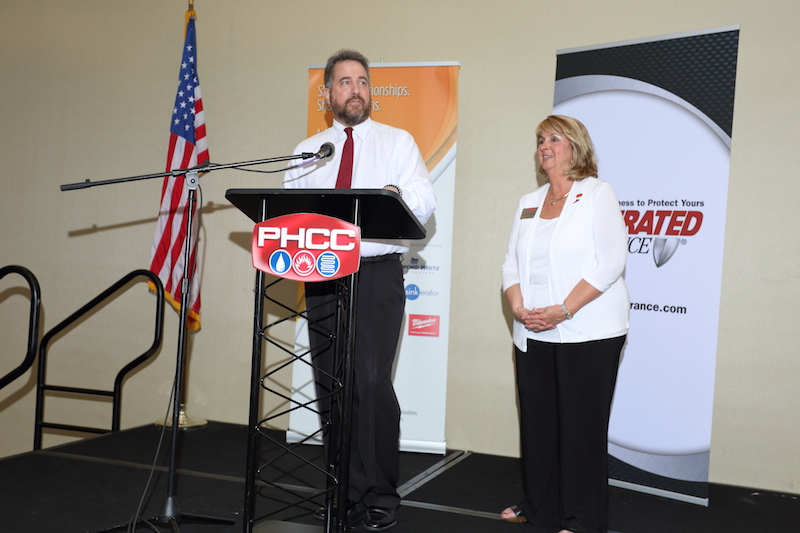
PHCC vice president of Legislative Affairs, Mark Riso and PHCC president, Laurie Crigler.
In the coming months, the department will support innovative, work-based learning approaches, technology modernization, and state initiatives to expand apprenticeship programs. By modernizing the government’s role in apprenticeships while developing new programs, they expect to achieve President Trump’s goal of attracting one million new apprentices over the next five years. This fall, the Department of Labor will again host National Apprenticeship Week (NAW) to highlight the benefits of apprenticeship.
In addition to workplace development in the trades, during several events and meetings with Congressional members and their staff, PHCC members advocated for increased water system infrastructure spending, and career and technical education, while thanking congressional members for recently passed tax reform.
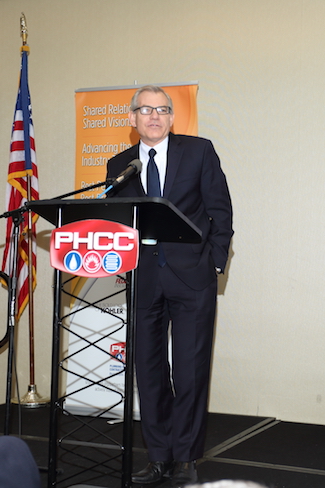
Rep. David Schweirkert (R-AZ)
PHCC also expressed support for workforce development though reauthorization of the Water Infrastructure Finance and Innovation Act (WIFIA). Members of Congress are aware of the country’s infrastructure problems, and Riso reiterates that they are not taking for granted the shape of the water systems in this country. “Flint was a wake-up call; we are impressed with members of the Hill’s knowledge of the degradation of the country’s water systems, and the steps needed to resolve the overall problem,” says Riso.
At the Congressional Breakfast, guest speaker Rep. Jim Costa (D-CA) gave his insights into the president’s infrastructure initiative, stating, “We’ve been living off the infrastructure investments of our parents and grandparents, and haven’t been making the same investments (as they have).” Costa added that Congress will need to figure out how federal components can help fund infrastructure improvements, “and this can only happen in a bi-partisan fashion.”
One of the highlights of this year’s conference was the annual Congressional Reception at Rayburn House Office Building on Capitol Hill. Several members of Congress including Rep. Steve Chabot, Rep. Tom O’Halleran and Rep. David Schweikert attended the reception and spoke in favor of PHCC’s support of WIFIA and the PROSPER Act.
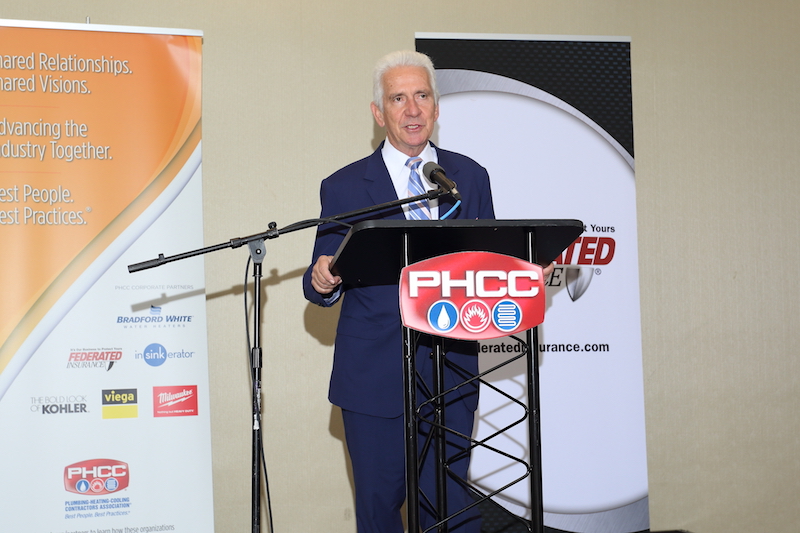
Rep. Jim Costa (D-CA)
Rep. David Schweikert (R-AZ), who serves on the House Ways and Means Tax Reform Subcommittee, gave a behind-the-scenes look at the complexities involved with passing the massive tax reform bill. “The first step was to pass tax reform,” he said. “The calculator won. Now we can start seeing some great things in our society.”
PHCC’s next legislative event in 2018 will be an education session at CONNECT 2018, “Decoded: Legislative and Regulatory Rules and Regulations Solved!” during which Riso and vice president of Regulatory Affairs Chuck White will explain the complex rules and regulations that keep contractors up at night. The next PHCC Legislative Conference is scheduled May 7-8, 2019, on Capitol Hill.
“PHCC is a conduit to help its members partner with lawmakers; to partner with the process to be able to design laws and rules to improve the quality of life for everybody,” says Riso.
